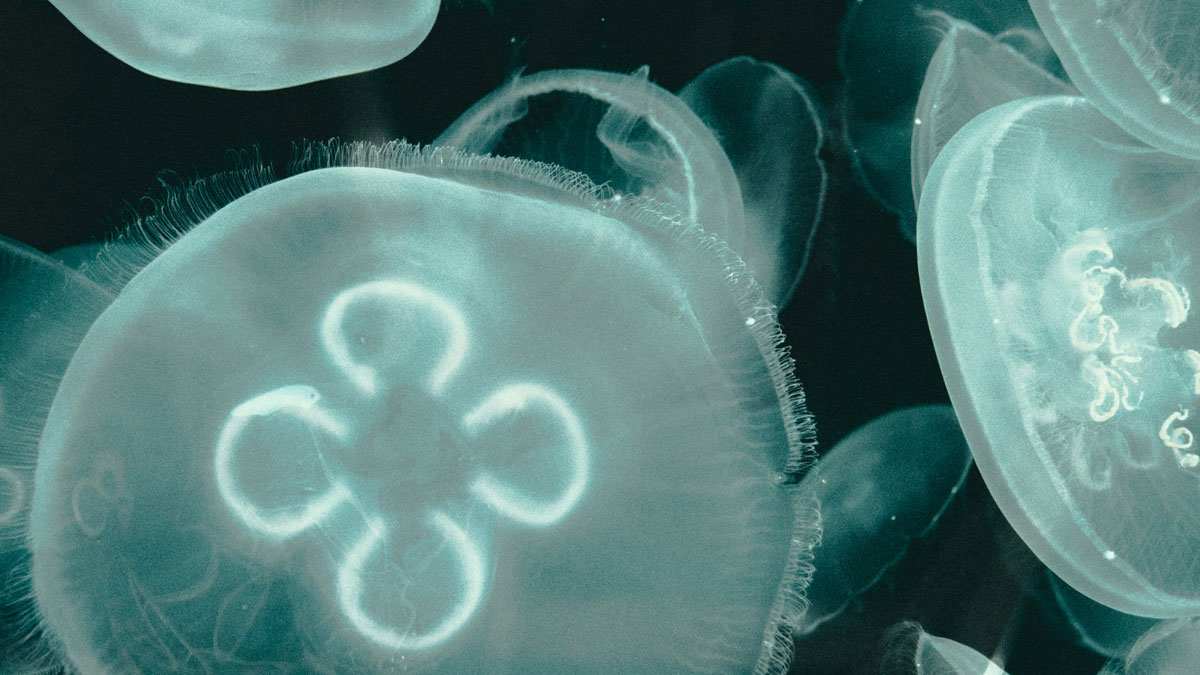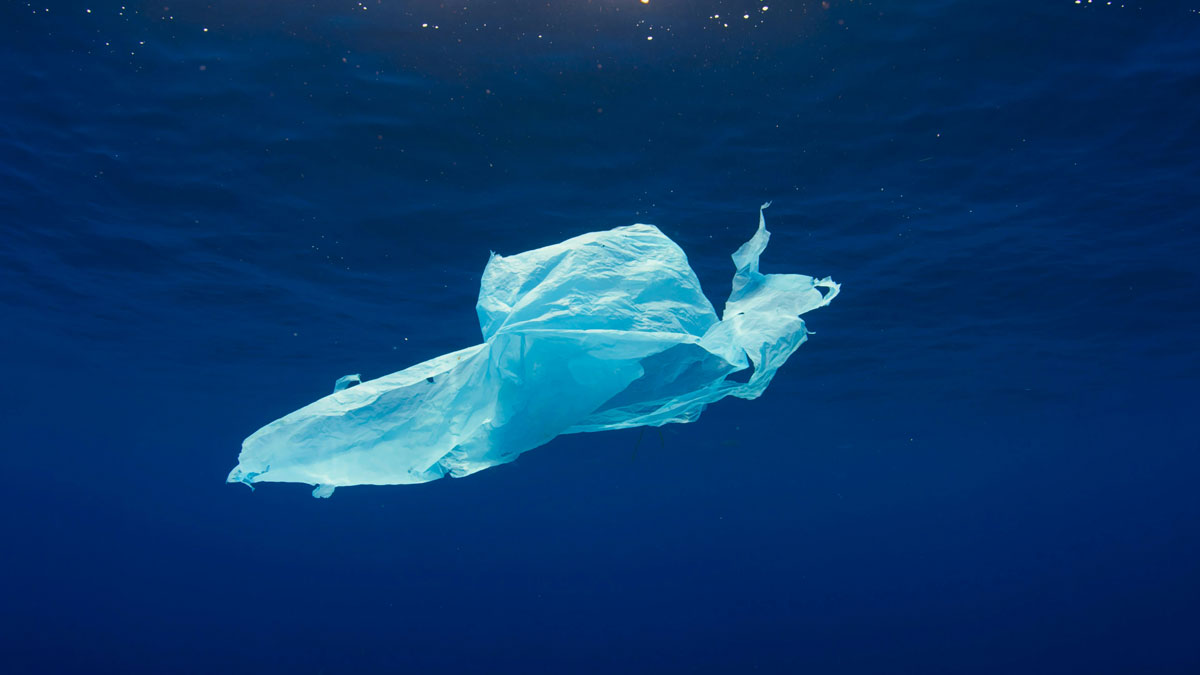As the Mediterranean waters warm with the approach of summer, jellyfish become ubiquitous inhabitants of its marine ecosystems, inhabiting Greece’s coastal regions. Let’s embark on a journey to uncover details about three common jellyfish species existing in Greece!
-
Pelagia noctiluca

Pelagia noctiluca, generally known as the mauve stinger, ranks among the most prevalent and noticeable jellyfish species inhabiting the Mediterranean, recurrently appearing in Greece’s waters during the summer months. Its epithet, “noctiluca,” in German, meaning “night light,” reflects its remarkable bioluminescent capabilities. This species possesses vibrant hues and exhibits phosphorescence upon disturbance, often leaving a luminescent mucus trail when handled. Referred to as the “mauve jelly” in British parlance and also generally recognized as an oceanic jelly, Pelagia noctiluca thrives predominantly in pelagic environments but demonstrates adaptability to coastal waters and even benthic habitats. Belonging to the class Scyphozoa, this species manifests radial symmetry and lacks distinct organs, possessing only a single body aperture. With a two to six-month lifespan, mortality is commonly attributed to turbulent aquatic conditions encountered during its pelagic voyages.
As a member of the phylum Cnidaria, Pelagia noctiluca exhibits carnivorous feeding behavior, primarily targeting zooplankton, small fish, crustaceans, other jellyfish, and eggs. Its predatory strategy relies on tentacles equipped with specialized cnidocytes, each containing nematocysts. These nematocysts possess barbed filaments designed to ensnare and immobilize prey by injecting toxins. Capable of penetrating the exoskeleton of crustaceans, such as crabs, with their barbed structures, Pelagia noctiluca employs the same nematocysts for defensive purposes. While its sting is venomous to humans, typically resulting in whip-like lesions, severe allergic reactions leading to life-threatening conditions like anaphylactic shock are rare yet plausible outcomes.
-
Cotylorhiza tuberculata

Photo by Katerina Topouzoglou, Aegean Sea
Cotylorhiza tuberculata, commonly called the Fried Egg Jellyfish or Brown Jellyfish and Saloufa in Greece, is prevalent in the Mediterranean region, including the Aegean Sea and Adriatic. Recent observations have noted its appearance in previously unoccupied territories, such as the Sea of Marmara in Turkey. Classified as harmless, this species exhibits a seasonal presence, typically observed from summer to winter. Its scientific name, Cotylorhiza, originates from the Greek terms “κοντύλι,” signifying cup, and “ρίζα,” denoting root, as Atlantis Diving Center mentions. Adult specimens of C. tuberculata are predominantly found near the water’s surface in shallow depths, with an average diameter of 35 cm, though they may attain sizes of up to 50 cm.
Cotylorhiza tuberculata predominantly sustains itself by consuming zooplankton and reproducing by asexual means. Among its natural predators, the sea turtle Caretta caretta stands prominent. While the presence of Fried Egg Jellyfish can lead to adverse ecological effects by depleting planktonic resources, thereby disrupting food chains, they also serve as beneficial habitats. These jellyfish provide a natural refuge, particularly for juvenile fish species, such as the horse mackerel, functioning as essential nursery environments.
-
Aurelia aurita
While the most common species of jellyfish in Greece are P. noctiluca and C. tuberculate, there are more jellyfish we can encounter during summer. One of them is the commonly known Moon Jellyfish, Aurelia aurita.

Photo by Jonathan Diemel on Unsplash
Aurelia aurita, a widely distributed organism, inhabits three of the world’s four oceans, excluding the Arctic and other marine environments. Its habitat encompasses coastal waters spanning nearly all of North and South America, Eurasia (excluding the northernmost regions), southern Greenland, and likely all coastlines of Australia. Moon jellies exhibit variable longevity and lifespan, influenced by environmental conditions, with an average lifespan ranging from approximately 8 to 12 months. They display seasonal growth patterns, with slower growth during colder periods and accelerated growth during spring. As carnivorous organisms, moon jellies prey upon tiny organisms ensnared on their bells or within their tentacles, including plankton, copepods, molluscs, fish eggs, and smaller jellyfish. They serve as prey for several species, including birds, other jellyfish, chum salmon, butterfish, sunfish, and leatherback sea turtles.
Why does the jellyfish population increase?
Dr. Panagiota (Yolanda) Koulouri, a researcher at the Hellenic Center for Marine Research, underscored in an interview with Athens 9.84 that the surge in jellyfish populations in marine environments can be attributed to multiple factors associated with climate change. Specifically, elevated temperatures and altered precipitation patterns, notably increased rainfall during spring, are identified as key contributors. Additionally, the decline in jellyfish predators due to overfishing exacerbates their proliferation. Contrary to common belief, the presence of jellyfish is not directly linked to organic pollution. Notably, expanding habitats for species like the Fried Egg Jellyfish into previously unoccupied regions such as the Sea of Marmara is believed to be facilitated by rising sea temperatures attributable to global warming, as highlighted by observations from Snorkel Things.
The danger of using plastic bags

Photo by Oleksandr Sushko on Unsplash
When disposed of improperly and entering oceanic environments, plastic bags frequently resemble jellyfish to marine organisms reliant on these drifting entities for sustenance. This misidentification leads to thousands of fatalities among turtles and birds annually, as they ingest non-digestible plastic masses, mistaking them for jellyfish. So, what can we do to make a difference? By reducing our reliance on single-use plastics in our daily routines and opting for reusable alternatives, we can play a crucial role in mitigating this threat to marine life.
References
https://animaldiversity.org/accounts/Pelagia_noctiluca/
https://eody.gov.gr/disease/mov-medoyses/
https://www.biodiversitygr.org/pelagia-noctiluca-bloom.html
https://link.springer.com/chapter/10.1007/978-94-007-7015-7_11
https://www.montereybayaquarium.org/animals/animals-a-to-z/mediterranean-jelly
https://www.atlantisgozo.com/fried-egg-jellyfish/



